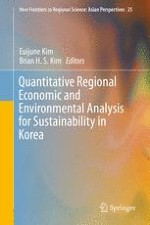2016 | OriginalPaper | Buchkapitel
Assessment of Community Vulnerability to Natural Disasters in Korea by Using GIS and Machine Learning Techniques
verfasst von : Dong Keun Yoon, Seunghoo Jeong
Erschienen in: Quantitative Regional Economic and Environmental Analysis for Sustainability in Korea
Verlag: Springer Singapore
Aktivieren Sie unsere intelligente Suche, um passende Fachinhalte oder Patente zu finden.
Wählen Sie Textabschnitte aus um mit Künstlicher Intelligenz passenden Patente zu finden. powered by
Markieren Sie Textabschnitte, um KI-gestützt weitere passende Inhalte zu finden. powered by
